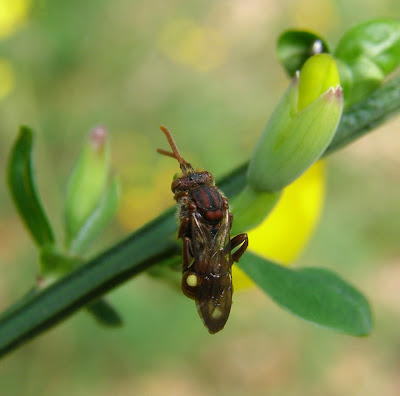
When I first saw this red insect, I had no idea what it was, so I just took a lot of photos, hoping to identify it later when I got back home. My initial guess was that it must be some type of hoverfly but, when I looked closely at the photos, I realized that the antennae were too long for a hoverfly and more like those of a wasp. I searched my pocket guides to insects but to no avail. Then I went to the web and eventually tracked down some pictures (here, here, and here) which allowed me to tentatively identify it as Nomada striata, a species of nomad bee. It didn't seem very active while I was photographing it. When I poked it, it just waved a leg at me. I wonder if it had just emerged and was still drying its wings out.

Photos taken in Whiteknights Park, Reading, UK, on 2009-04-18.
 Wed 2009-04-22
Wed 2009-04-22 
